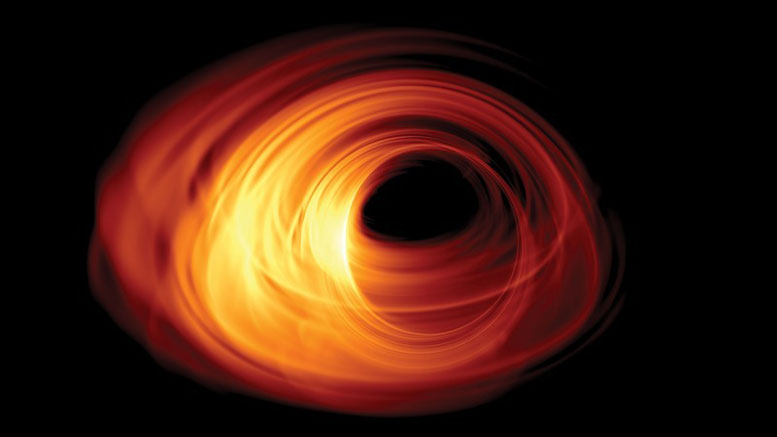

The EHT team reported that the M87* bright emission disk subtends an angle of 42 ± 3 microarcseconds. The two black holes subtend approximately the same angle when viewed from Earth.Source: EHT Collaboration (acknowledgment: Lia Medeiros) The EHT team reported, “We were stunned by how well the size of the ring agreed with predictions from Einstein’s Theory of General Relativity.” By comparison, M87* is vastly larger, with the inner black hole region measuring about 23.6 billion miles (38 billion km) across (about 330 times the diameter of the entire Sgr A* black hole, including the glowing gas ring), as shown in the following scale diagram.Ĭomparison of the sizes of M87* (left) and Sgr A* (right). The glowing gas ring surrounding the Sgr A* black hole has an outer diameter of about 72 million miles (115 million km) across, which is approximately the diameter of Mercury’s orbit around the Sun in our solar system.Sgr A* has a mass is about 4 million times the mass of our Sun, which is just a small fraction (1/1,500 th , or 0.07%) of the mass of M87*.Sgr A* is about 27,000 light years away, at the heart of our own galaxy (about 2 thousand times closer than M87*, which is in a different galaxy).The Sgr A* radio frequency (millimeter wave) observations were made in 2017 at a wavelength of 1.3 mm (230 GHz), the same as the first image of M87*.ĭetails that have emerged so far from the Sgr A* observation include the following. X-ray/infrared NASA image of the heart of our Milky Way galaxy.Įven though it was much closer than M87*, getting an image of Sgr A* was much harder because the Sgr A* black hole had to be viewed through the densely populated central plane of our Milky Way. Source: EHT Collaboration Composite image showing the location of the Sgr A* black hole (inset) in a composite Initial EHT team and ESO results from their Sgr A* observations have been published and are available on The Astrophysical Journal Letters website here: First-ever image looking down into the ring of rotating, glowing gas On, the EHT team and the European Southern Observatory (ESO) held a press conference and released the first-ever image to directly show the ring of glowing gas surrounding the Sgr A* black hole. For more information on this work, see my 24 January 2017 article here: Using observed data from more than 30 stars in the region around the galactic center, scientists developed high-resolution simulations that helped refine estimates of the location, mass and size of the Sgr A* black hole without having data from direct observations. Its presence has been inferred from the motions of visible stars that are orbiting under the gravitational influence of the black hole or are in the general vicinity of the black hole. For more information on the first M87* black hole image, see my 10 April 2019 article here: įor decades, there has been mounting evidence that there is a massive black hole, known as Sagittarius A*, or Sgr A* for short, at the center of our Milky Way galaxy. Gases orbiting around the giant M87* black hole take days to weeks to complete an orbit.

One Solar mass is roughly equivalent to the weight of the Sun and about 333,000 times the mass of Earth.

The EHT team estimated that M87* has a mass of about 6.5 billion Solar-masses (6.5 billion times greater than the mass of our Sun), and the black hole consumes the equivalent of about 900 Earth-masses per day. The target for their observation was the supermassive M87* black hole at the center of the distant Messier 87 (M87) galaxy, some 54 million light years away. The first-ever direct image of a black hole was released on 10 April 2019 by the Event Horizon Telescope (EHT) team and the National Science Foundation (NSF).


 0 kommentar(er)
0 kommentar(er)
